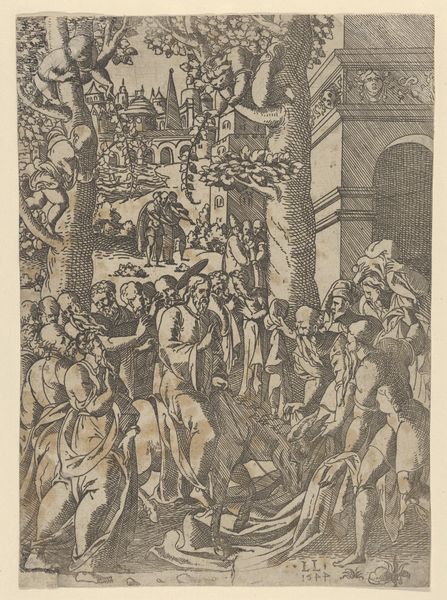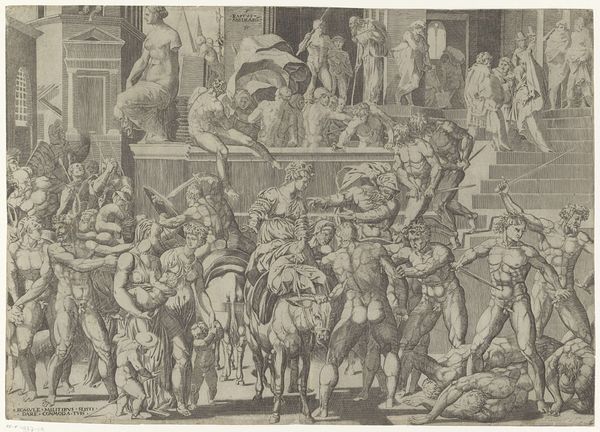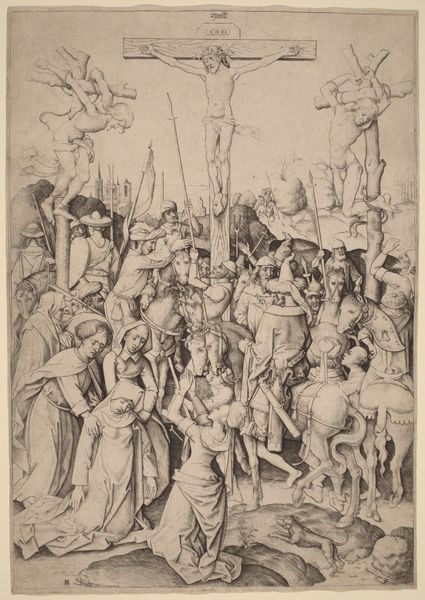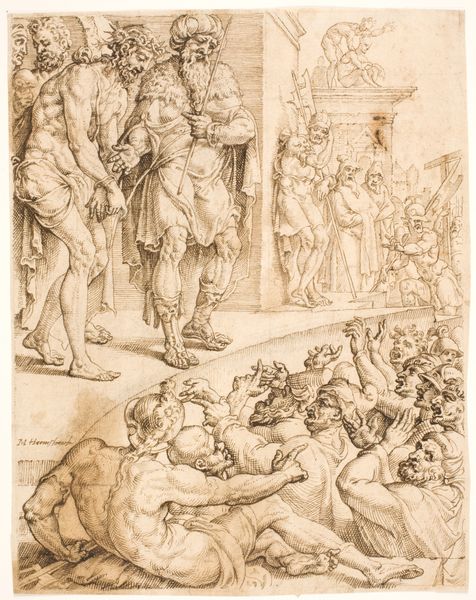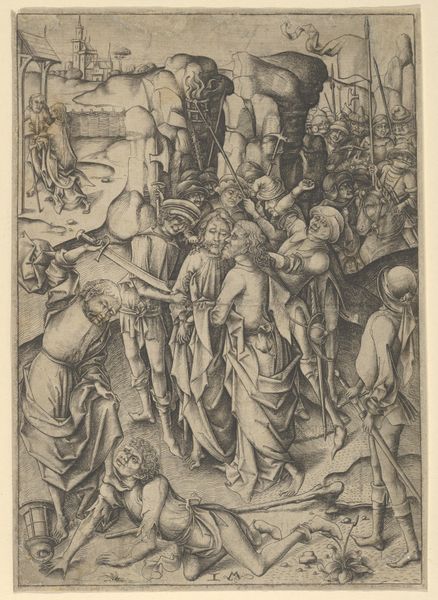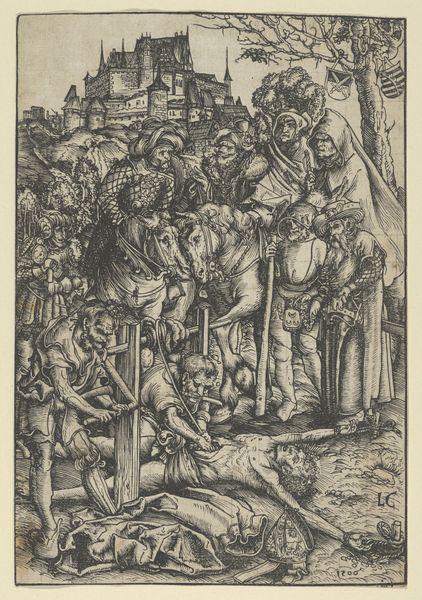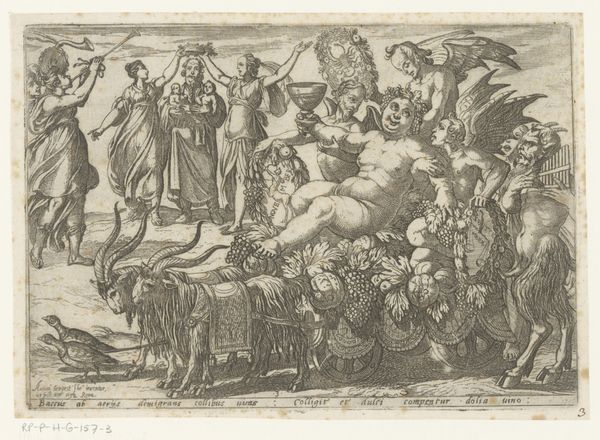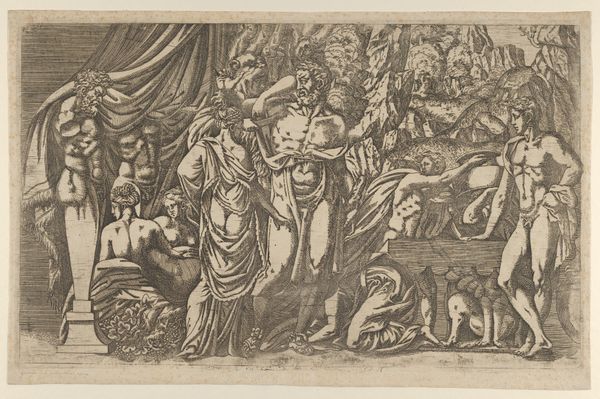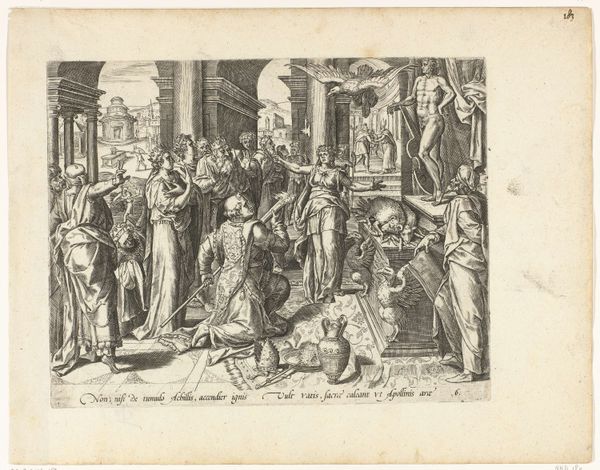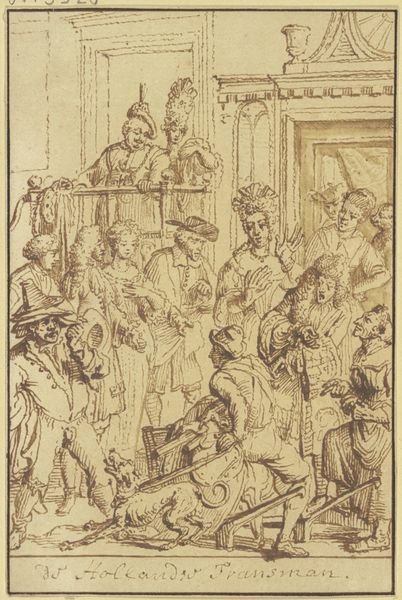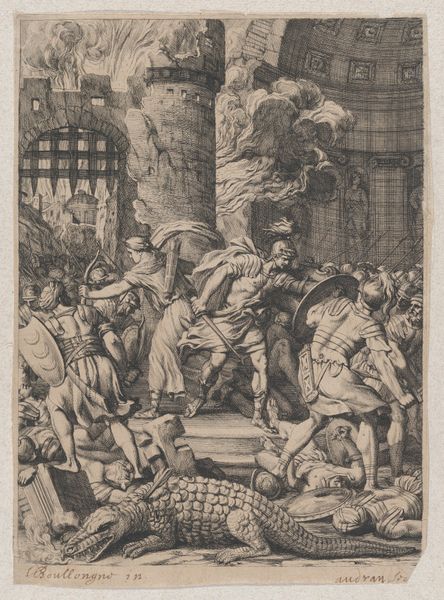
drawing, print, intaglio, engraving
#
drawing
#
baroque
#
pen drawing
# print
#
intaglio
#
human-figures
#
figuration
#
group-portraits
#
history-painting
#
engraving
Dimensions: image: 18 1/4 x 13 7/8 in. (46.3 x 35.3 cm), trimmed to image
Copyright: Public Domain
Curator: Here we have Jacques Bellange's "The Martyrdom of Saint Lucy," a rather stunning intaglio print, dating sometime between 1575 and 1616. What springs to mind when you first see it? Editor: Utter chaos, but a beautifully organized chaos. It feels like a theatrical scene frozen in time, all these figures crammed together with these elaborate costumes. It’s both grotesque and fascinating. I can’t look away. Curator: Precisely! Bellange excelled in these kinds of dramatic compositions. The print, made with engraving and etching, shows the moment before Lucy's execution. You see the figures contorting with grief or rage around her. Editor: It's interesting how Bellange uses the print medium to create this layered effect, almost like a smoky atmosphere. The figures in the back seem to blend with the landscape, creating a sense of depth and mystery. Is there some message conveyed by Saint Lucy or the figures surrounding her? Curator: In art history, Lucy's story has resonated for centuries. Saint Lucy, the patron saint of sight, is an evocative emblem for all those working to expand the horizons of knowledge through imagery, to reveal how institutions are sustained by political motivations and financial interests. Editor: Yes, this martyr figure definitely makes a bold statement. She represents hope, resilience, standing against cruelty. The dramatic effect definitely invites contemplation about freedom. Curator: What intrigues me is Bellange’s commitment to these lavish designs, which might read as mere spectacle at first glance, but they're steeped in contemporary issues surrounding the Catholic Church. This print functions almost as a declaration of loyalty. Editor: It's truly captivating how this piece evokes such strong reactions centuries later. It makes one question which underlying assumptions it would encourage visitors to explore more closely. Curator: Yes, absolutely, whether in faith, art or the structures of power! It's definitely food for thought and fuel for the creative spark!
Comments
No comments
Be the first to comment and join the conversation on the ultimate creative platform.
